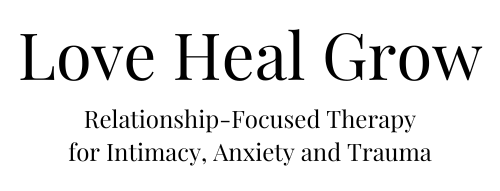
Think about your family holidays. Whose house are they at? Who makes the food, the desserts, the treats that are a part of your traditions? Who sends invitations, initiates group texts, and does all the organizing. Is it you? Your mom? Your sister? Your wife?
Most likely, this person is a woman. What we’re talking about, the practice of keeping the family communication going and ensuring that family togetherness occurs, is referred to as kinkeeping. First studied in the 1980s as part of Carolyn Rosenthal’s research, kinkeeping is an important part of family life. But it is work and it’s work that almost universally falls on women’s shoulders. Rosenthal noted that women were the primary kinkeepers in the 80s, and a recent study found that 91% of kinkeepers are women.
For some women, the role is one they relish. But that’s not true for everyone! And regardless of gender, kinkeepers often need support that they don’t get. Today, let’s talk about kinkeeping and how it impacts family life and personal responsibilities and relationships.
What is Kinkeeping?
Kinkeeping, a term gaining more recognition recently, refers to the often unseen labor involved in maintaining family relationships and traditions. It involves all kinds of activities that help maintain and strengthen family connections. These tasks can range from the mundane, such as sending out holiday cards and coordinating family reunions, to the deeply emotional, like providing a listening ear during difficult times or mediating family conflicts. Essentially, kinkeepers act as the glue that holds extended families together, ensuring that relationships remain intact and vibrant.
Despite its importance, kinkeeping is often considered invisible work. It typically goes unacknowledged and is not compensated. This lack of recognition can lead to feelings of frustration and exhaustion for those who take on the role. Additionally, the responsibilities associated with kinkeeping are often assumed to be part of a woman’s “natural” duties within the family, further perpetuating gender inequalities. (There’s no such thing as a “natural” duty, by the way! Anybody and everybody should contribute to household chores and family responsibilities.)
The Gendered Nature of Kinkeeping
Historically, and still predominantly today, the role of kinkeeper has been occupied by women. Remember what we said earlier– more than 91 percent of kinkeepers are women. This statistic underscores a broader societal expectation that women should be the primary nurturers and caretakers within families. And we push this expectation early in life. Think about how little girls are socialized to play versus how boys are taught. Girls are often encouraged to be more empathetic, nurturing, and considerate– which are all great traits that every child should have. But boys are generally not given the same level of responsibility for maintaining family ties, which can lead to an imbalance in the distribution of these tasks in adulthood.
The Impact of Kinkeeping on Women
The additional burden of kinkeeping can have significant consequences for women’s mental and emotional health. Balancing kinkeeping with other responsibilities, such as careers, childcare, and personal relationships, can lead to feelings of overwhelm and burnout. And because this invisible labor usually goes unnoticed (it’s invisible labor, after all), it leaves kinkeepers without the recognition or support they need to manage these demands.
Also, the emotional labor involved in kinkeeping can be particularly taxing. Kinkeepers are often the first to provide support during family crises, the ones to remember and celebrate milestones, and the peacemakers in times of conflict. This constant emotional engagement can be draining, leaving little time or energy for self-care.
Reflecting on Kinkeeping in Your Own Life
But it’s important to remember that kinkeeping isn’t necessarily a bad thing! It’s an important part of keeping a family together. It’s just that it shouldn’t be forced on people, and people shouldn’t have to do it alone.
Given the significant impact of kinkeeping, it’s important for individuals and families to reflect on how these responsibilities are distributed within their households. Here are some questions to consider:
- Who primarily takes on the role of kinkeeper in your family?
- Are the duties of kinkeeping recognized and appreciated by other family members?
- Is there an equitable distribution of kinkeeping tasks, or do they fall disproportionately on one person?
- How does the distribution of kinkeeping responsibilities affect the emotional and mental well-being of the kinkeeper?
- And the most important question of all: How can I help?
By thinking about these questions, families can gain a better understanding of the dynamics at play and begin to address any imbalances. Open and honest communication about the demands and impacts of kinkeeping is essential for creating a more equitable distribution of these responsibilities.
Sharing the Load
Kinkeeping shouldn’t be one person’s burden. When multiple family members step up, kinkeeping gets easier for everyone, and lets the whole family participate more fully in traditions.
So how do you share the load? First, you have to talk about it. This process involves open communication, mutual respect, and a willingness to share responsibilities. Here are some strategies to consider:
Discuss Kinkeeping Roles Openly
Have conversations with your partner and other family members about the various tasks involved in kinkeeping and who currently performs them. This discussion can help make invisible labor more apparent and foster a greater appreciation for the work being done.
Get The Men Involved
Actively encourage men in the family to participate in kinkeeping tasks, too! Breaking down traditional gender roles requires work, but it’s worth it. Taking up some kinkeeping duties lets men feel more involved, deepening their relationships and creating deeper emotional ties.
Acknowledge And Appreciate The Work
Regularly recognizing and appreciating the efforts of the kinkeeper can help alleviate some of the emotional burden. Simple gestures of gratitude can go a long way in making the kinkeeper feel valued.
Seeking Professional Support
For many families, finding a balance in kinkeeping duties can be challenging. In such cases, consulting with a relationship or family therapist can be beneficial. Therapists can provide strategies for better communication, help address underlying issues related to gender roles and expectations, and assist in creating a more equitable distribution of responsibilities.
Moving Forward As A Family
Kinkeeping is important, but it’s not something a lot of us talk about. But we need to, because it’s an important conversation that opens the doors to deeper discussions about who does what in a relationship. Kinkeeping is about the family at large, yes, but it’s also an important part of the relationship between couples. There’s often an expectation that not only will a woman do the kinkeeping for her side of the family, but that she has to do it for her husband’s side as well.
When we take the time to think about family responsibilities and who does what, this invisible work starts to become visible. And that’s really important for everybody’s mental wellbeing! When we talk about and acknowledge the importance of this work, the people who do it feel more loved and appreciated. Everybody is happier, and the family gets along better.
But it’s also important to remember that these steps aren’t always easy, and it can be a hard conversation to get started. If you want help talking about the role of invisible labor in your family, or are struggling with too many of these responsibilities for yourself, don’t hesitate to reach out to the Love Heal Grow therapists today and schedule an appointment. Our team is full of family and relationship experts who are here to help you discuss these tricky subjects and develop healthy family relationships!






















